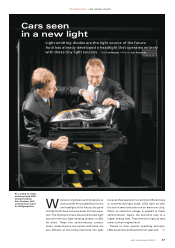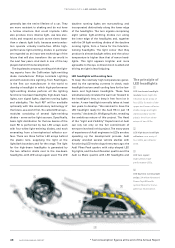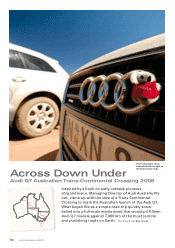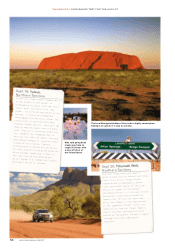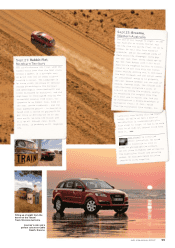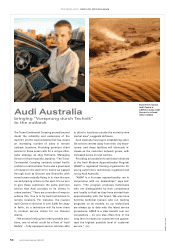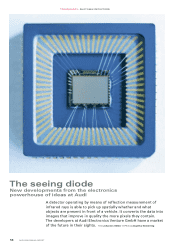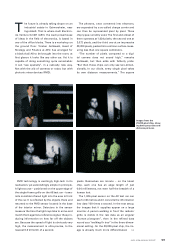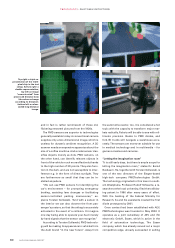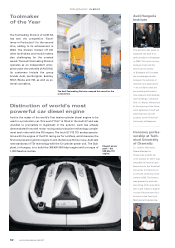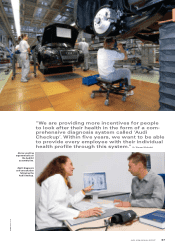Audi 2006 Annual Report Download - page 59
Download and view the complete annual report
Please find page 59 of the 2006 Audi annual report below. You can navigate through the pages in the report by either clicking on the pages listed below, or by using the keyword search tool below to find specific information within the annual report.
Sacred bird in the Audi
computer tomograph:
a highlight of scientific
research.
Cars and archaeology
How a 2,000-year-old mummified bird from Egypt came to
be scanned in the Audi computer tomograph. Text Eric Felber
TECHNOLOGY: FOR THE SAKE OF SCIENCE
PHOTO: AUDI
57AUDI 2006 ANNUAL REPORT
It was revered as a sacred bird in An-
cient Egypt. The Ibis (Threskiornis
aethiopicus) was believed to be the in-
carnation of the moon god Thoth and,
after its death, was used as an em-
balmed offering and burial object. One
such specimen of a mummified bird
around 2,000 years old, from Abydos in
Egypt, found its way to the Audi plant
in Neckarsulm in August 2006, through
the mediation of the Hesse State
Museum in Darmstadt and the State
Museum of Württemberg. At Neckar-
sulm, the antique treasure was put
through a series of tests that are other-
wise only performed there on com-
plete vehicle bodies, in a computer
tomograph that is the only setup of its
kind in the world.
The accuracy of the 3D x-ray machine
used at AUDI AG is in the order of one-
hundredth of the breadth of a human
hair (about one micrometre). This was
the first time it had been used for purely
archaeological purposes. Dr. Erwin
Keefer, from the Württemberg State
Museum, found this unusual source
of assistance by the car manufacturer
invaluable: “The uniquely high-resolu-
tion pictures are a great help to us in
our research. This is the first time in
Germany that it has been possible to
screen a mummified object using an
industrial CT system.” The images that
the x-ray robot delivers are up to 50
times sharper than conventional ones.
The images even make it possible to
examine the bird’s feather stalks for
the most minute of details.
Like the phoenix from the ashes, the
bird of antiquity is resurrected in com-
prehensive detail in front of the re-
searchers’ eyes: “We can unwrap the
mummy entirely without physically de-
stroying its exterior,” explains Michaela
Kurbel, taxidermist of the Hesse State
Museum in Darmstadt, delighted at the
new findings that would have remained
hidden without Audi’s assistance.
The car manufacturer normally uses
the apparatus, which costs around one
million euros and weighs some ten
tonnes, for scanning weld seams and
punched and clinched joins on vehicle
bodies. “This method represents an
important new departure in that parts
can now be examined without any con-
tact and non-destructively,” explains
Dr. Manfred Sindel, from Aluminium
Technology Quality Assurance at Audi.
It was previously necessary to cut
components laboriously out of the
body in order to examine them for any
inaccuracies. Even body components
measuring more than five metres in
length can now be examined in this
way without any problems. But minus-
cule electronic components just three
millimetres across can equally be scru-
tinised in the Audi CT.
The experts at Audi investigate
several entire vehicle bodies each year.
This involves measuring every detail of
thousands of joins and evaluating
them non-destructively.
The results of the successful experi-
ment are now to be put to creative
use by the scientists: thanks to the
3D images from the CT, the Ibis is
destined to spread its wings again. By
computer animation, of course. Per-
haps one day it will even be used on a
Pharaoh.


